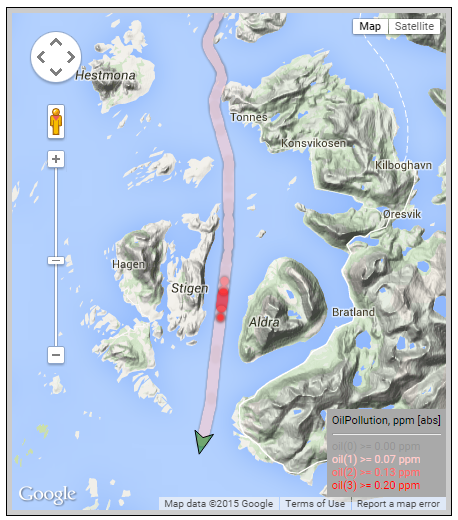The Hyperspectral Laser Induced Fluorescence (HLIF) LiDAR (Light Detection and Ranging) is a compact device for remote detection of oil in water on board of moving vessel or stationary platform. The HLIF LiDAR can detect and classify oil on a water surface and in the water column, submerged oil, and oil in ice slush.
This lightweight (less than 40 kg) LiDAR is assembled in a waterproof box and has a low power consumption (less than 150 W). LiDAR provides Oil-In-Water detection at distances up to 50 m with sensitivity down to ppm (part per million) concentration range and a sampling rate up to 100 Hz. It operates continuously and unattended regardless of the weather conditions like high waves, day or night, low temperature etc. (patent pending).
Thanks to integrated analysis of HLIF spectra the device can distinguish oil from any other substances in water. The HLIF LiDAR is accompanied with multifunctional software with local and central user interfaces to handle multiple devices in operation and produce an integrated real-time map of measurement results.
View HLIF LiDAR Video and Live Data Feed in operation by Ocean Visuals AS

Technical specification
| Sensing distance | Up to 50 m |
| Conditions of operation | Continuous, Day and Night |
| Sensitivity for oil products: Min concentration in water column Min oil thickness on water surface | 1 ppm 1 µm |
| Pulse Repetition (Sampling) rate | Up to 100 Hz |
| Sensing laser | UV, eye-safe |
| Hyperspectral detector | UV and VIS spectral ranges |
| Data storage | Local and cloud servers |
| Setup of device operation | Remote, via local server |
| Communication line | Ethernet |
| Mode of operation | Unattended |
| Power consumption | 150 VA |
| Dimensions (L × W × H) | 65 × 45 × 37 cm |
| Weight | 40 kg |
